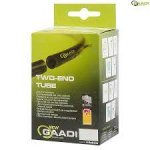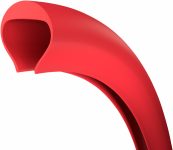Depends on your setup.
If you just use the stuff that comes in a kit, or typical axle hardware, you'll probably need at least three tools (axle nut wrench, allen wrench or screwdriver or socket wrench (or driver) for torque arm retention hardware, wire cutters or boxknife to cut plastic cable ties), more if you have multiple fastener sizes or types. If the axle wiring uses the typical Higo/Julet connectors, unplugging them and plugging them back in securely can be difficult, and might require a tool to help do so without damaging things. If it uses other types of connectors, some of them may require tools of their own to disconnect/connect. Etc.
If you have enough different fasteners to undo/redo, or they are setup in a way that makes them hard to deal with, it can be a huge PITA to do roadside by yourself (moreso in the noonday hot sun or the dark and cold or the rain and wind or whatever worst-case conditions you might have there)
Alternately, you can optimize the installed axle hardware to require only one tool, if you like. If you fabricate pinching dropout plates, for instance, you can leave the axle nuts off entirely, as they aren't needed--the axle will be clamped by the dropouts and prevented from moving in any direction. An allen wrench can be used for the bolts that do the pinching, and the same size can be used for the bolts to secure the plates to the bike's dropouts. This gets two (or more) potentially large tools down to one tiny one. Then you use spiral plastic wrap or velcro strips to secure cabling to frame instead of zipties, and that becomes toolless.
If the pinching dropouts are designed so the axle can only sit in one place in them, then the reinstall is even easier; it "can't" be done wrong and cause problems like tire rub that require undoing/redoing things over again.




